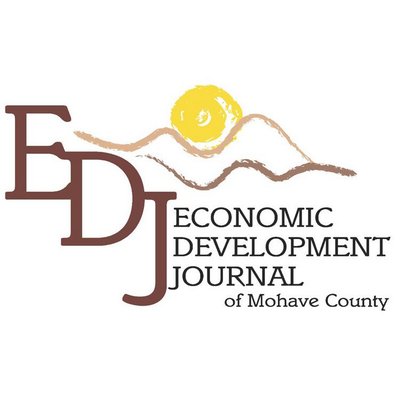ARIZONA — The State Transportation Board has set the stage for a transformative phase in Arizona’s highway infrastructure with the approval of the 2023-2027 Five-Year Transportation Facilities Construction Program. This ambitious plan encompasses the expansion and improvement of several key highways that are crucial for both passenger and freight traffic across the state. At the heart of this program is an allocation of $571 million for projects that are not just about expanding the current capacity but also enhancing the overall interchange functionality.
The program’s highlight is the comprehensive development along Interstate 17 between Anthem Way and Sunset Point, a project with a whopping budget of $328 million. This initiative, which began in 2022, is pivotal in addressing the growing traffic demands in one of Arizona’s most critical corridors. Similarly, Interstate 10, connecting Phoenix and Casa Grande, is set to witness major expansion works. This includes a $400 million investment for widening the highway between Loop 202 and State Route 387, and an additional $110 million dedicated to replacing the Gila River bridges, marking a significant enhancement in this vital stretch of road.
Another notable project under this program is the construction of the first phase of the I-40/US 93 West Kingman interchange, with a budget of $145 million set for 2024. This project is a strategic step towards improving connectivity and easing traffic flow in a key area of the state. Additionally, the plan aims to widen the last two-lane section of State Route 260 in the Lion Springs area with an investment of $109 million, scheduled for 2026. This project will fulfill the Arizona Department of Transportation’s (ADOT) goal of a four-lane divided highway along the entire SR 260 corridor, significantly improving road safety and travel efficiency.
The program isn’t just limited to expansion but also prioritizes pavement preservation. An impressive $2.5 billion is earmarked for upgrading 400 lane miles of pavement across Arizona from fair and poor condition to good condition over five years. This investment highlights the state’s commitment to maintaining and improving existing infrastructure, ensuring longer life and better performance of the roads. The plan also includes a substantial $463 million investment in projects aimed at enhancing highway safety, efficiency, and functionality. This includes incorporating smart technology and adding shoulders to the roads, alongside a notable project that involves $68.1 million to expand broadband connectivity along I-40 from Flagstaff to the California state line.
Looking ahead to 2024, the Arizona Department of Transportation (ADOT) is preparing for a busy year, especially in the Phoenix area. The focus will be on several key freeway construction or maintenance projects. This includes the launch of two Loop 101 widening projects and continued advancements on improvement projects along Interstate 10 near the Broadway Curve and along Interstate 17 north of Phoenix. Such developments are not just about meeting the current traffic needs but are also a proactive approach to accommodate the future demands of a growing state.
In 2024, the Phoenix area is poised to see significant advancements in its freeway system. The Loop 101 (Pima Freeway) Improvement Project between Shea Boulevard and Princess Drive/Pima Road in Scottsdale is a standout project, set to commence on January 5. This endeavor involves adding a lane in each direction within a 4.5-mile work zone, aimed at alleviating congestion in one of the city’s bustling areas. Additionally, the interchange at Frank Lloyd Wright Boulevard will undergo a transformation to a diamond configuration, a strategic move designed to enhance traffic flow. The project, scheduled for completion in approximately two years, is a testament to ADOT’s commitment to improving daily commute and travel in Scottsdale.
Another critical project in the Phoenix area for 2024 is the Loop 101 (Agua Fria Freeway) Improvement Project, stretching from I-17 to 75th Avenue in the northwest Valley. This two-year project, slated to start in fall 2024, also focuses on adding a lane in each direction. The plan includes significant interchange and cross-street improvements at 75th Avenue, addressing the increasing traffic challenges in this part of the Valley. These enhancements are expected to provide much-needed relief to daily commuters and contribute to the overall efficiency of the region’s transportation network.
The I-10 Broadway Curve Improvement Project, an ambitious venture between the I-17 “Split” and Loop 202 in Chandler, is another highlight. Regarded as the largest freeway reconstruction project in ADOT’s history, it began in fall 2021 and is projected to complete near the end of 2024. This project includes constructing elevated ramps for direct connections between I-10 and State Route 143, as well as lanes for local traffic between Baseline Road and 40th Street. Covering 11 miles of one of the busiest freeway stretches in the Valley, this project is pivotal in enhancing the travel experience for thousands of motorists daily.
North of Phoenix, the I-17 Improvement Project between Anthem Way and Sunset Point is a significant undertaking. The project, which began in fall 2022, encompasses the addition of third lanes in each direction between Anthem Way and Black Canyon City, along with an innovative 8-mile flex lanes system north of Black Canyon City. Slated for completion by late 2025, these improvements are crucial for managing the increasing traffic volumes and enhancing the safety and efficiency of this vital corridor.
In addition to these major projects, ADOT is also focusing on the I-10 Gila River Bridges Project southeast of Riggs Road. This involves reconstructing the outdated I-10 bridges crossing the Gila River. Scheduled to start in spring 2024 and expected to take approximately two years to complete, this project is critical for ensuring the long-term reliability and safety of this essential river crossing. Together, these projects reflect a comprehensive strategy by ADOT to modernize and expand Arizona’s freeway system, addressing current needs while preparing for future growth and development.
Beyond the notable construction and expansion projects, ADOT’s investment extends significantly into improving highway safety and functionality across Arizona. A notable allocation of $469 million will be utilized for incorporating smart technology enhancements and adding shoulders to various highways. These advancements are crucial in enhancing road safety, reducing congestion, and improving the overall driving experience for Arizonans. Such technological integrations are not merely about current needs but are a forward-thinking approach, aligning with the future of smart and automated transportation.
Furthermore, the state’s commitment to maintaining its roadways is evident in the additional $40 million earmarked for pavement repairs statewide. This is in addition to the already underway or soon-to-commence $50.5 million in pavement improvement projects, most of which are located in northern Arizona. These initiatives highlight the importance of regular maintenance in ensuring longevity and safety of the road infrastructure, ultimately contributing to smoother and more reliable travel for both residents and visitors.
The economic implications of these vast infrastructure projects are profound. The modernization and expansion of highways not only address current traffic demands but also stimulate economic growth by improving access and connectivity. Enhanced transportation networks play a pivotal role in attracting businesses, facilitating trade, and supporting the overall economic development of the state. The strategic allocation of funds in these projects reflects Arizona’s recognition of infrastructure as a key driver of economic prosperity.
Significantly, the funding for these ambitious projects is sourced through a blend of state and federal funds, demonstrating a collaborative effort in enhancing Arizona’s infrastructure. The use of state transportation monies, boosted by a strong economic recovery, and federal COVID-relief funds underscore the priority given to these projects at both state and federal levels. This funding strategy ensures that the state can undertake these critical projects without overburdening its residents, while also leveraging federal support to maximize impact.
Arizona’s highway improvement projects for 2023 and 2024 are not just about road expansions and upgrades; they represent a comprehensive vision for a safer, more efficient, and economically robust transportation future. As these projects progress, they promise to reshape the state’s transportation landscape, ultimately enhancing the quality of life for Arizonans and fostering a more dynamic and accessible state for all. These initiatives, therefore, are a cornerstone in Arizona’s journey towards becoming a more connected and economically vibrant state in the years to come.
—Jeremy Webb
Flexitarian vs. Omnivore: Limiting meat intake may help improve heart health
Eating less meat could have benefits for the heart, research has found. Changing dietary habits and increasing physical activity levels can reduce the risk of cardiovascular disease later in life.
Read More


























